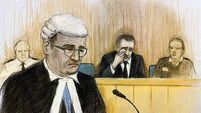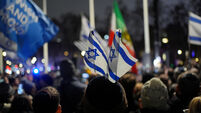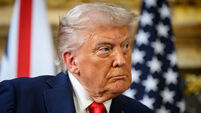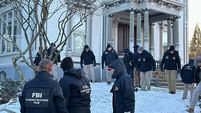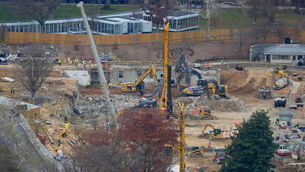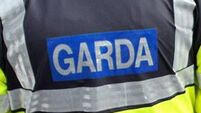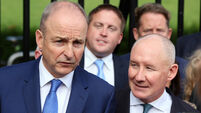143 killed in bloodiest day since end of Iraq war
At least 143 people were killed when simultaneous explosions ripped through crowds of worshippers today at Shiite Muslim shrines in Baghdad and Karbala on the holiest day of the Shiite calendar. It was the the bloodiest day since the end of major fighting.
The blasts, using a combination of suicide bombers and planted explosives, came during the Shiite festival of Ashoura and coincided with a shooting attack on Shiite worshippers in Quetta, Pakistan that killed at least 41 people and wounded more than 150.
Three suicide bombers set off their explosives in and around Baghdad’s Kazimiya shrine, killing 58 and wounding 200, US Brigadier General Mark Kimmitt told reporters.
At least one suicide attacker blew himself up and pre-set explosives went off in Karbala, killing 85 and wounding more than 230, he said.
A fourth suicide bomber whose explosives did not detonate was captured at Kazimiya, and six people were arrested in connection to the attack in Karbala, Kimmitt said in Baghdad.
Kimmitt said a “prime suspect” in the attacks was Abu Musab al-Zarqawi, a Jordanian militant in Iraq who US officials say is planning spectacular attacks on Shiites aimed at sparking a Sunni-Shiite civil war and derailing US plans to hand over power to the Iraqis on June 30.
The Iraqi Governing Council, which declared three days of mourning, was considering delaying the signing of a newly agreed interim constitution, which had been planned for Thursday, US coalition spokesman Dan Senor said.
The constitution is a key step in the US transfer plans, but Senor underlined that the June 30 handover was not threatened by the violence.
The attacks sparked a wave of Shiite outrage – much of it directed at US troops in the Iraqi capital.
US soldiers who arrived at Kazimiya were attacked by angry crowds throwing stones and other debris, injuring two Americans.
“This is the work of Jews and American occupation forces,” a loudspeaker outside Kazimiya blared. Inside, cleric Hassan Toaima told an angry crowd: “We demand to know who did this so that we can avenge our martyrs.”
US intelligence officials have long been concerned about the possibility of militant attacks during Ashoura.
Last month, US. Officials released what they said was a letter by Jordanian militant Abu Musab al-Zarqawi outlining a strategy of spectacular attacks on Shiites, aimed at sparking a Sunni-Shiite civil war.
Iraq’s Governing Council blamed the attacks on “terrorists” seeking to enflame sectarian divisions in the country.
In a show of unity, Sunni, Shiite and Kurdish council representatives appeared before journalists, calling on Iraqis to maintain calm “in order to cheat our enemies of the chance to inflict evil on the nation”.
After the council declared three days of mourning, council members were considering delaying the signing of a newly agreed interim constitution, which had been planned for Thursday, US coalition spokesman Dan Senor said.
Also today, insurgents threw a grenade into a US Army Humvee as it drove down a Baghdad road, killing one 1st Armoured Division soldier and wounding another.
Today was the climactic day of the 10-day Ashoura festival, the most important religious period in Shiite Islam, which marks the killing of Hussein in a 7th century battle and draws hundreds of thousands of pilgrims from Iraq, Iran, Pakistan and other Shiite communities to the Iraqi shrines.
In Karbala, 50 miles south of Baghdad, five large blasts went off shortly after 10 am near the golden-domed shrine of Imam Hussein, one of Shiite Islam’s most beloved saints, and another shrine. The explosions hurled bodies in all directions and sending crowds of pilgrims fleeing in panic.
Dead and wounded were loaded onto wooden carts normally used to ferry elderly pilgrims around holy sites. Bodies ripped apart by the force of the blasts lay on the streets.
At about the same time, three explosions rocked the inside and outside of Baghdad’s Kazimiya shrine, which contains the tombs of two other saints. Panicked men and women, dressed in black, fled screaming and weeping as ambulances raced to the scene.
Crowds of enraged survivors swarmed nearby hospitals, some blaming Americans for stirring up religious tensions by launching the war, others blaming al-Qaida or Sunni extremists.
Stone-throwing Iraqis attacked US Army medics trying to help wounded at Kazimiya, driving the US troops back into their high-walled compound then trying to storm the gates. Soldiers threw smoke grenades and fired shotguns into the air to drive the mob off.
Iran said some of its citizens were among the victims, and Iranian Foreign Ministry spokesman Hamid Reza Asefi said the United States and its allies are “responsible for security” for the pilgrims at Karbala and in Baghdad.
The Kazimiya blasts went off inside the shrine’s ornately tiled walls and outside in a square packed with street vendors catering to pilgrims.
The courtyard inside was strewn with torn limbs and picnic baskets. The streets outside were littered by thousands of shoes and sandals belonging to worshippers who had been praying inside.
Hundreds of armed Shiite militiamen swarmed around the shrine, and a US helicopter hovered overhead. Black mourning banners traditional in Ashoura hung in tatters. Posters of prominent Shiite clerics were stained with blood.




